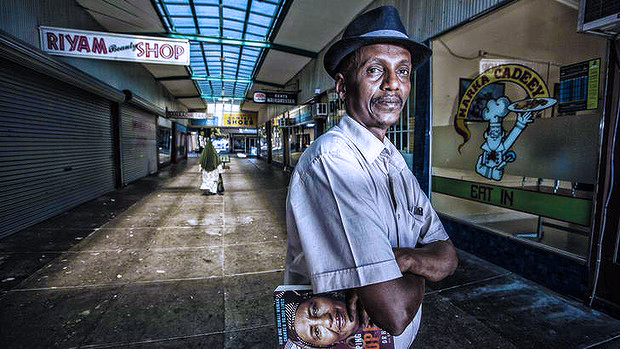
Sometimes a simple item of clothing can tell a complex story about cultural differences and the challenges of integration for migrants. So it is with one of my favourite accessories, my hat. My wife Khadijo was the first to spot it. We were at Northland shopping centre, passing time, when she spotted a dark grey hat with silver stripes. “Try it on,” she said. Interestingly, almost all the negative comments about my hat came from Somali men.
I approached the mirror with some trepidation. In my native Somalia a hat, a Koofi, can denote religious and political power. A locally made Baraawe Koofi is favoured by spiritual elders, tribal leaders, Islamic scholars and certain politicians and businessmen.
In more recent times the growing influence of Wahabi school of thought in Somalia has seen the arrival in Somalia of hats with more explicit religious connotations. Some men use these hats on a daily basis, while others only wear them during Friday prayers. Otherwise it is not uncommon to see younger men or non-religious men in baseball-style caps.
But my hat, the hat I wore as I approached the shop mirror, is rare in my homeland. The wearer of such a hat would be described as “Westernised”. Looking at my reflection, I felt a tingle of excitement. I looked like a handsome stranger, like an adventurer!
From the moment we left the shop, passers-by seemed to beam at me with approval. I interpreted every friendly glance as a big tick for my hat. The compliments continued in the days that followed. I attended a function organised by my federal MP. “I like this,” said an old lady, pointing at my hat, “you are elegant.” “Nice hat,” said a man at the Aldi in Heidelberg West, “makes you look young and sharp.”
In Fitzroy, a middle-aged man who was walking towards me on the street smiled and said: “You look really nice.” At this point I offered my hat to the man because in my culture if someone extols your dress, you’re expected to offer something in return. Thankfully, he declined. “Keep it for me,” he said.
After all these compliments, I was tempted to assume that the Somali community would likewise embrace my new look. So one day I took myself and my hat to the Heidelberg Mall, also known as Little Somalia. “You look like a cowboy,” said the first Somali I ran into. “You look like General Aidid”, said another, referring to the notorious Somali warlord who was often photographed in a striped hat.
Yet another remarked: “You look like an Australian farmer, like Bob Katter.” Unfortunately this was also an insult. In Somali culture there is a stigma associated with farmers, who are branded as nomads. I began to feel gloomy. It reminded of the time a man at my local petrol station had said: “You’re from Somalia, yeah? Why don’t you go back and go into the piracy business? You could become a millionaire in one month!”
A few days later a female relative stared disapprovingly at my hat. She said only young troublemakers wear hats of this kind.
“You are a good man,” she sighed. “But this hat lowers your dignity.” Even educated Somalis joined the chorus of disapproval; a fact that really shocked me. A man with a PhD from a university in the West told me that I was expected to wear only Somali hats. He said that in wearing the hat I was “misrepresenting my culture”.
Though saddened by such comments, I understood the motivation behind them. I am a respected member of the Somali community; people refer to me as “our Doctor, our Professor”. They expect me to be a gatekeeper of Somali culture.
It was different with younger Somalis. One young woman looked me over from head to toe and declared: “Abti [uncle] you look like so stylish and neat with this hat. Can I have a photo with you?” After evening prayers at the Heidelberg mosque one Friday, a young man even confessed to buying a similar hat for himself. “Yusuf, I copied you,” he said. “You’re our role model.” I was glad the older men didn’t hear us.
Interestingly – aside from the one rebuke from a female relative – almost all the negative comments about my hat came from Somali men. Perhaps this is because in Somalia women rarely critique men, at least publicly, and vice versa.
Another interpretation is that Somali women in Australia, and in the West in general, are more integrated than the men. Women have gained a lot educationally, economically and socially – they feel empowered by the new environment. The men, on the other hand, feel the loss of their power over women, the loss of the status they had enjoyed in Africa. Perhaps to these men my hat symbolises an embrace of new social norms that diminish their power.
The saga of my controversial hat created a cultural divide inside me as well. I have to think twice each time I get the urge to wear it. I have to check my schedule for the day to see whether I’ll be mingling with Somalis or non-Somalis, and to judge whether my hat will be welcome or not. Sometimes I worry that I have succumbed to criticism. But then I think about the tolerance and open-mindedness of the younger generation and I feel a renewed strength and confidence. These future leaders understand that it’s my hat, my choice.
Dr Yusuf Sheikh Omar is a researcher at the Victorian Transcultural Mental Health Unit of StVincent’s Hospital and co-convener of the Somali Youth Dialogue.
Source: http://www.smh.com.au/